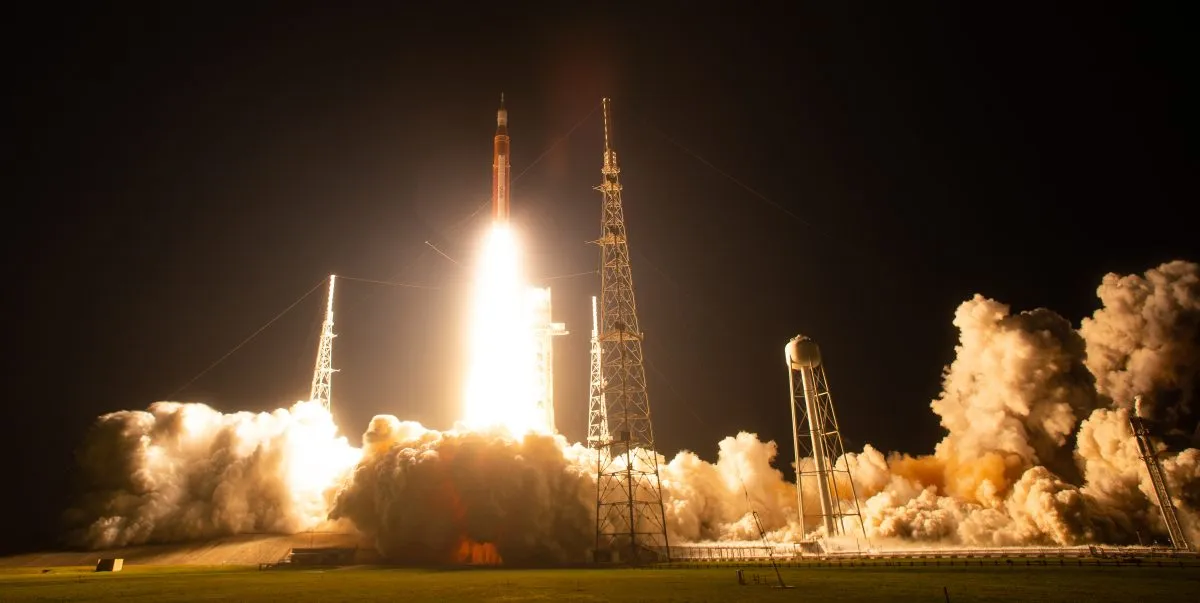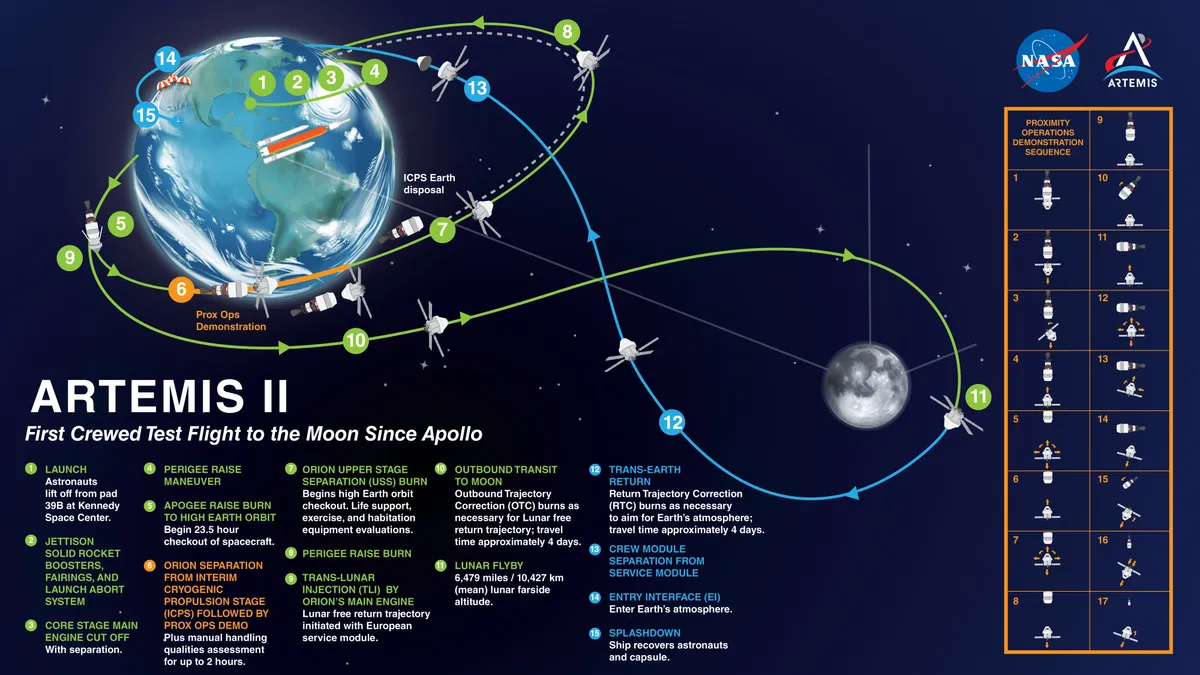NASA and the Canadian Space Agency announced the crew of the Artemis 2 mission to the Moon on 3 April.
Artemis 2 is the next step in the Artemis Programme, NASA’s quest to put the first female astronaut and first astronaut of colour on the Moon, over 50 years after the end of the Apollo missions.
The crew consists of: Commander Reid Wiseman; Pilot Victor Glover: Mission Specialist 1 Christina Hammock Koch and Mission Specialist 2 Jeremy Hansen.
“For the first time in more than 50 years, these individuals – the Artemis 1 crew – will be the first humans to fly to the vicinity of the Moon. Among the crew are the first woman, first person of colour, and first Canadian on a lunar mission, and all four astronauts will represent the best of humanity as they explore for the benefit of all,” says Vanessa Wyche, director of NASA’s Johnson Space Centre.

The current launch date for Artemis 2 is set for November 2024, where the crew will launch into space using the Space Launch System (SLS) rocket, traveling in the Orion Crew Module.
The 10-day mission will be the first time a crew has been cleared to fly on either of these systems following the success of uncrewed test flight Artemis 1, which ended in December 2022.
As such, Artemis 2 will test both the technical capabilities of the vehicles and the procedures future missions will follow.
Should all go well with Artemis 2, then the first landing mission, Artemis 3, is expected to follow a year or so later.
“The Artemis 2 crew represents thousands of people working tirelessly to bring us to the stars. This is their crew, this is our crew, this is humanity's crew,” says NASA Administrator Bill Nelson. “Each has their own story, but, together, they represent our creed: E pluribus unum – out of many, one. Together, we are ushering in a new era of exploration for a new generation of star sailors and dreamers – the Artemis Generation.”
Meet the Artemis 2 crew

Commander Reid Wiseman
Wiseman previously spent 165 days on the International Space Station as part of Expedition 41 from May to November 2014. He also served as chief of the Astronaut Office from December 2020 to November 2022.
Pilot Victor Glover
Glover piloted the SpaceX Crew-1 mission, the first operational flight to depart from US soil since the Space Shuttle retired. He stayed on the ISS for 168 days during Expedition 64 returning home in May 2021. He participated in four spacewalks during his stay.
Mission Specialist 1 Christina Hammock Koch
Koch has the record for the longest single spaceflight by a woman, clocking in at 328 days for her role in Expedition 59, 60 and 61. She has conducted six spacewalks, totalling 42 hours and 15 minutes – three of these were the first all-female spacewalk, which she completed alongside Jessica Meir.
Mission Specialist 2 Jeremy Hansen
Hansen is a Canadian astronaut making his first flight on Artemis 2. He previously served in the Canadian Armed Forces as a fighter pilot. After completing his astronaut training with the Canadian Space Agency in 2011, he served as Capcom at Mission Control Centre at Johnson Space Center, and helped lead training for new astronaut candidates.
Artemis 2 mission overview

The Artemis 2 mission will launch from Kennedy Space Centre in Florida, initially entering an elliptical orbit around Earth of 185km by 2,900km.
After one 90 minute orbit, Orion’s thrusters will fire to reach an orbit of 185km by 74,000km.
This orbit will allow Artemis 2 to build up speed for their eventual push towards the Moon, and take 23.5 hours to complete. During this time the crew will check all systems are working well.
Once that is confirmed, they will conduct a translunar injection burn sending them on a path to the Moon.
It will take them four days to complete the 370,000km journey to the Moon, but they will not enter orbit at the end of it. Instead, Orion will fly a figure-8 path, taking them 10,300km beyond the Moon.
From this vantage point, the crew will be able to see both Earth and the Moon from Orion’s windows – the first-time human eyes have been able to see the whole planet at once since Apollo 17. The Artemis programme aims to allow a more diverse group of people to experience this powerful and affecting sight, known as the Overview Effect.

The figure-8 path means they will be able to better harness the Earth-Moon gravity field and return home with a highly efficient ‘free-return’ trajectory, using Earth’s gravity to pull them home.
The return journey will take another four-days and will splash down in the ocean for recovery. After the mission, the Orion capsule will be refurbished for use on a future spaceflight.
